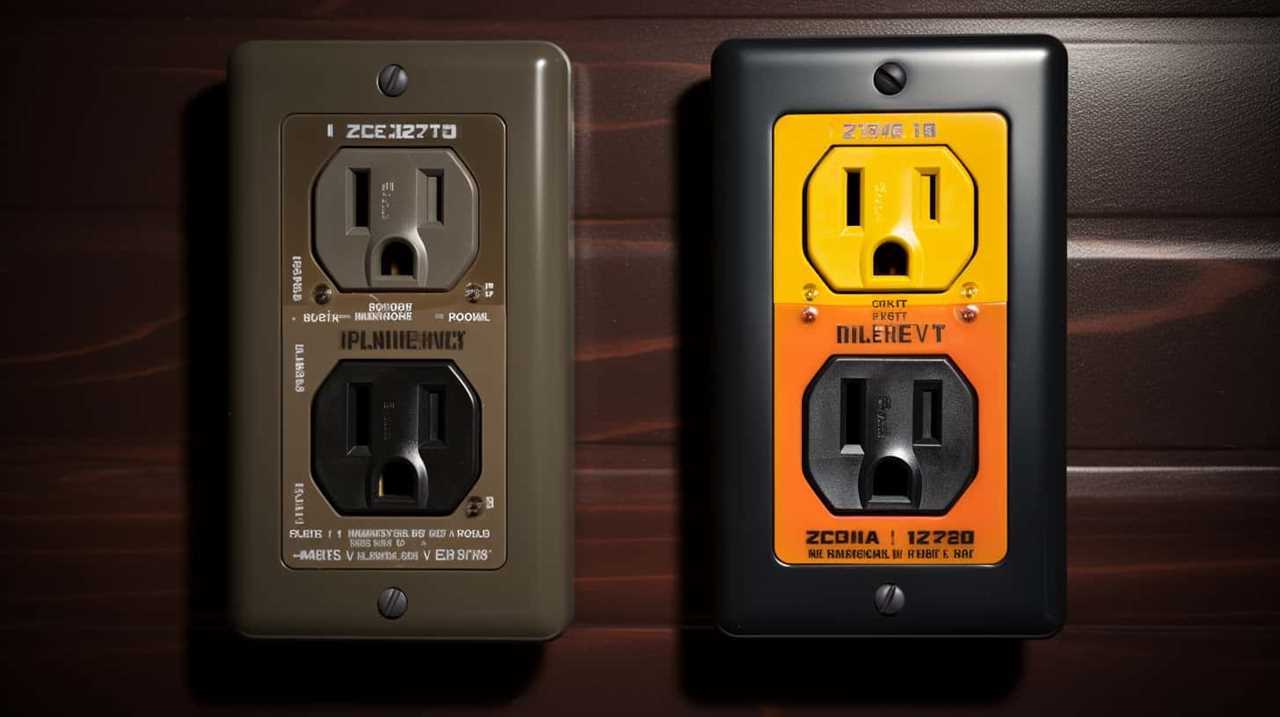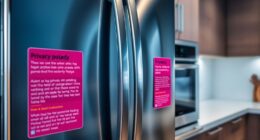There is an ongoing discussion about the effectiveness of turning off appliances at the socket to save electricity in the quest for energy efficiency. This topic has intrigued those who are dedicated to mastering the complexities of energy consumption.
By delving into the realm of standby power consumption and the concept of vampire energy, we can uncover the truth behind this phenomenon.
Additionally, decoding energy-saving modes and evaluating the efficacy of energy-efficient appliances will provide valuable insights.
Furthermore, exploring the savings potential of unplugging chargers and understanding the concept of phantom load will shed light on this topic.

In this article, we will debunk common misconceptions and provide tips for maximizing energy savings, offering a comprehensive understanding of the impact of switching off appliances at the plug.
Key Takeaways
- Standby power or vampire power can account for up to 10% of a household’s energy usage.
- Unplugging appliances when not in use or using power strips with an on/off switch can reduce standby power.
- Energy-saving power strips can help mitigate vampire energy consumption.
- Phantom power, which refers to the electricity consumed by devices when they are plugged in but not in use, can account for up to 10% of residential electricity usage. Unplugging devices or using power strips with switches can eliminate or minimize phantom power.
The Basics of Switching Off Appliances
Switching off appliances at the plug is a fundamental practice for conserving electricity. Understanding energy usage and minimizing power wastage are key to achieving this goal.
When an appliance is plugged in, it continues to draw power even when not in use, known as standby power or vampire power. By switching off appliances at the plug, you can prevent this unnecessary power consumption. It is estimated that standby power can account for up to 10% of a household’s energy usage.
Therefore, adopting the habit of switching off appliances when they are not being actively used can significantly reduce electricity consumption and save on energy bills. This simple action requires minimal effort but can have a substantial impact on energy conservation.
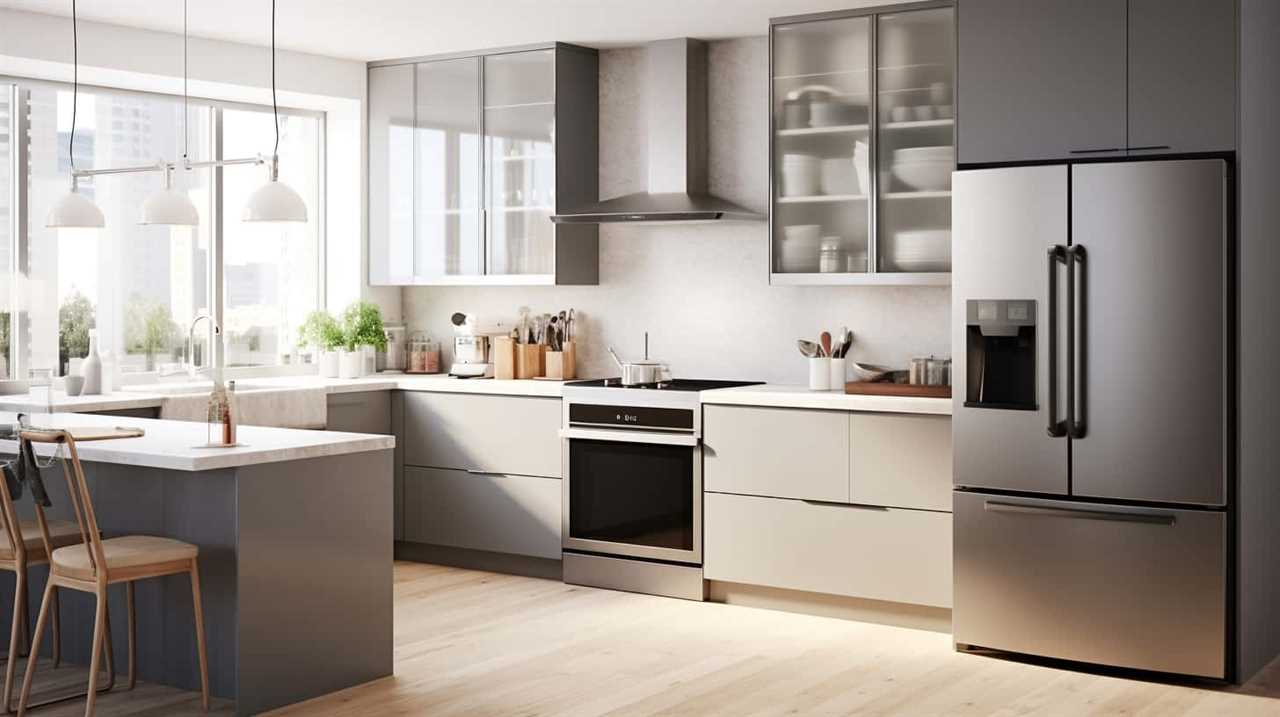
Understanding Standby Power Consumption
To delve deeper into the concept of standby power consumption, it is crucial to understand how appliances continue to draw power even when not actively in use.
Standby power, also known as vampire power or phantom load, refers to the energy consumed by electronic devices while in standby mode or when they are turned off but still plugged in.
This power consumption is necessary for the devices to respond quickly to user commands or maintain certain functionalities, such as keeping the clock running or receiving updates. However, standby power can account for a significant portion of a household’s energy usage, contributing to higher electricity bills and environmental impact.
To maximize energy efficiency and reduce standby power, it is recommended to unplug appliances when not in use or use power strips with an on/off switch to completely cut off power supply.

The Myth of Vampire Energy
The concept of vampire energy refers to the energy consumed by electronic devices when they are not in use but remain plugged in. Standby power consumption is a significant contributor to vampire energy, as appliances and devices continue to draw power even when switched off.
Energy-saving power strips can help mitigate this issue by cutting off power supply to multiple devices at once. Raising awareness about phantom power and encouraging individuals to unplug devices when not in use can also contribute to reducing vampire energy consumption.
Standby Power Consumption
Standby power consumption, commonly known as vampire energy, persists even when appliances are switched off at the plug. This phenomenon occurs because many electronic devices continue to draw a small amount of power even when not in use, which can add up to significant energy waste over time. To address this issue and maximize energy efficiency, reducing standby power should be a priority.
Here are five important facts about standby power consumption:

- Standby power can account for up to 10% of a household’s electricity usage.
- Common culprits of standby power consumption include televisions, computers, game consoles, and chargers.
- Unplugging devices or using power strips with individual switches can effectively eliminate standby power.
- Certain appliances, such as digital clocks and programmable devices, may lose their settings when completely disconnected from power.
- Energy-efficient alternatives, such as smart power strips, are available to automatically cut power to devices when they are not in use.
Understanding the impact of standby power consumption is crucial in our quest for energy efficiency. Now, let’s explore the benefits of using energy-saving power strips to combat this issue.
Energy-Saving Power Strips
Reducing standby power consumption can be effectively achieved through the use of energy-saving power strips. These power strips combat the myth of vampire energy by eliminating standby power. They do this by cutting off the electricity supply to connected appliances when they are not in use.
Energy-saving power strips often come with features like timers or motion sensors. These features automatically turn off the power after a certain period of inactivity. By using energy-saving power strips, households can significantly reduce wasted energy and lower their electricity bills.
These power strips are especially useful for devices that consume power even when turned off. Examples of such devices include televisions, computers, and gaming consoles. Energy-saving power strips provide an easy and convenient way to minimize standby power consumption and promote energy efficiency.

Transitioning to the next section about ‘phantom power awareness’, let’s explore additional strategies to tackle this issue.
Phantom Power Awareness
Energy-saving power strips effectively combat the myth of vampire energy by eliminating standby power and reducing wasted electricity consumption. Phantom power usage, also known as standby power or vampire power, refers to the energy consumed by electronic devices even when they are turned off or in standby mode. By using energy-saving power strips, you can take control of your energy consumption and reduce the amount of electricity wasted.
Here are five energy-saving strategies to raise your phantom power awareness:
- Unplug devices when not in use.
- Use smart power strips that automatically cut off power to devices.
- Opt for energy-efficient appliances and electronics.
- Enable power-saving features on your devices.
- Educate yourself and others about the impact of phantom power.
By implementing these strategies, you can minimize phantom power usage and save energy.

Now, let’s move on to decoding energy-saving modes.
Decoding Energy-Saving Modes
By understanding the various energy-saving modes available, consumers can effectively reduce electricity usage when switching off appliances at the plug.
Decoding energy-saving modes is crucial in evaluating the energy efficiency of appliances. Energy-saving modes are designed to reduce power consumption when devices are not actively in use. These modes include sleep mode, standby mode, and power-off mode.
Sleep mode allows the device to enter a low-power state while still maintaining some functionality.
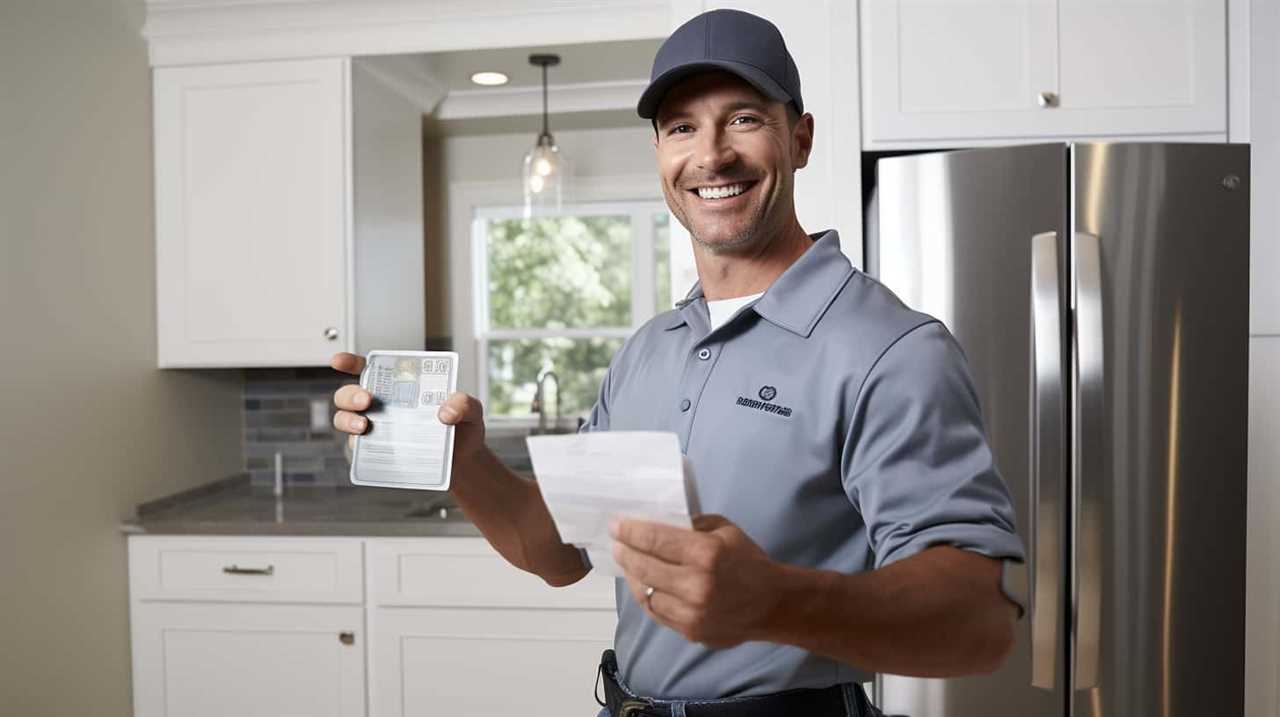
Standby mode allows the device to quickly resume full operation when needed but consumes more power than sleep mode.
Power-off mode completely shuts down the device, minimizing power consumption to almost zero.
Understanding and utilizing these energy-saving modes can significantly contribute to reducing energy consumption and saving electricity, ultimately leading to a more sustainable and cost-effective lifestyle.
Evaluating Energy-Efficient Appliances
When it comes to evaluating energy-efficient appliances, there are several important points to consider.

Firstly, the energy savings potential of a new appliance should be assessed, as this will determine how much electricity can be saved over time.
Additionally, the cost-effectiveness of upgrading to an energy-efficient appliance should be evaluated, weighing the upfront cost against the long-term savings on energy bills.
Lastly, the environmental impact of the appliance should be taken into consideration, looking at factors such as greenhouse gas emissions and resource consumption.
Energy Savings Potential
One significant aspect to consider when evaluating the energy savings potential of appliances is the extent to which they are designed to be energy-efficient. Energy-efficient appliances are specifically engineered to consume less energy while still providing the same level of performance.

Here are five key factors to consider when evaluating the energy savings potential of appliances:
- Energy Star certification: Look for appliances that have the Energy Star label, as they meet strict energy efficiency guidelines set by the Environmental Protection Agency (EPA).
- Energy-saving features: Check if the appliances have features like programmable timers, energy-saving modes, or sensors that optimize energy consumption.
- Size and capacity: Opt for appliances that are appropriately sized for your needs to avoid wasting energy on unused space.
- Energy consumption ratings: Consider the energy consumption ratings provided by the manufacturer to compare the energy efficiency of different appliances.
- Maintenance and upkeep: Regular maintenance and cleaning can ensure that appliances operate at peak efficiency, reducing energy consumption.
Understanding the energy savings potential of appliances can help you make informed decisions when it comes to reducing energy consumption.
Now, let’s delve into the cost-effectiveness of upgrades in the next section.
Cost-Effectiveness of Upgrades
Evaluating the cost-effectiveness of upgrades in terms of energy-efficient appliances can provide valuable insights into potential electricity savings. Conducting a thorough cost benefit analysis and examining the return on investment can help consumers make informed decisions about upgrading their appliances.

Energy-efficient appliances are designed to consume less electricity while performing the same tasks as their conventional counterparts. While these appliances may have a higher upfront cost, the long-term savings in energy consumption can outweigh the initial investment.
Environmental Impact Considerations
To accurately assess the environmental impact of energy-efficient appliances, it is crucial to consider their overall energy consumption and efficiency. Energy conservation strategies play a significant role in reducing our carbon footprint and promoting sustainability. When evaluating the environmental impact of energy-efficient appliances, it is important to consider the following:
- Energy Star certification: Look for appliances that are Energy Star certified, as they meet strict energy efficiency standards set by the Environmental Protection Agency.
- Energy consumption ratings: Check the energy consumption ratings of appliances to determine how much energy they use compared to similar models.
- Lifecycle analysis: Consider the entire lifecycle of the appliance, including its manufacturing, transportation, use, and disposal, to assess its overall environmental impact.
- Renewable energy compatibility: Look for appliances that can be powered using renewable energy sources, such as solar panels or wind turbines, to further reduce carbon emissions.
- Energy-saving features: Consider appliances with energy-saving features like auto-shutoff or sleep mode, which can help conserve energy when the appliance is not in use.
By considering these factors, individuals can make informed choices and contribute to carbon footprint reduction.
Now, let’s explore the next section, which focuses on identifying high-energy consuming devices.

Identifying High-Energy Consuming Devices
It is essential to ascertain the power-hungry devices in order to effectively manage energy consumption. Identifying energy hogs is a crucial step towards implementing energy-saving strategies. By identifying the devices that consume the most energy, individuals and organizations can take targeted actions to reduce their electricity usage and lower their carbon footprint.
There are several ways to identify high-energy consuming devices. One effective method is to use an energy monitor, which provides real-time data on electricity usage for individual appliances. This allows users to identify the devices that are consuming excessive amounts of energy and take appropriate measures to reduce their usage.
Another approach is to look for devices that have high wattage ratings. Appliances such as refrigerators, air conditioners, and water heaters tend to consume significant amounts of energy. By focusing on these high-wattage devices, individuals can prioritize their efforts to reduce energy consumption.
Unplugging Vs. Turning off at the Plug
One key consideration when addressing the issue of saving electricity is the comparison between unplugging appliances and turning them off at the plug. Both methods have their own advantages and it is important to understand the differences to make an informed decision. Here are some points to consider:

- Unplugging:
- Completely cuts off the power supply, eliminating any standby power consumption.
- Requires manual effort to plug and unplug the appliances.
- Ideal for devices that are rarely used or when going on vacation.
- Power Strips:
- Allow multiple devices to be turned off with a single switch.
- Provide surge protection for sensitive electronics.
- Convenient for devices that are frequently used or located in hard-to-reach areas.
- Benefits of Power Management Software:
- Enables remote monitoring and control of energy usage.
- Optimizes energy consumption by scheduling power cycles.
- Provides detailed insights and analytics for better energy management.
The Impact of Smart Power Strips
Smart power strips have a significant impact on reducing electricity consumption. These innovative devices are designed to optimize smart power usage and implement energy conservation techniques.
Unlike traditional power strips, smart power strips have built-in features that allow users to control and monitor the power usage of connected appliances. They often come equipped with timers, motion sensors, and surge protection capabilities. By utilizing these features, users can schedule when appliances should be powered on or off, reducing the amount of standby power consumed.
Additionally, smart power strips can detect when an appliance is not in use and automatically cut off power supply to it, eliminating vampire power. These advanced power strips play a crucial role in promoting energy efficiency and reducing electricity waste.
Transitioning into the subsequent section about the role of power management software, we will explore how it further enhances energy conservation efforts.

The Role of Power Management Software
Power management software plays a crucial role in optimizing energy usage and reducing power consumption. By monitoring and controlling the energy usage of various devices, it can identify inefficiencies and suggest ways to improve energy efficiency.
This software can provide valuable insights into energy-saving opportunities and help individuals and businesses make informed decisions about their power usage.
Energy-Saving Benefits
The use of power management software offers energy-saving benefits by optimizing the efficiency of appliances when switched off at the plug. By employing power management software, individuals can take advantage of various features that reduce energy consumption and promote energy efficiency.
Here are five energy-saving benefits of power management software:

- Standby power reduction: Power management software can detect when an appliance is in standby mode and automatically cut off power supply, eliminating unnecessary energy consumption.
- Scheduled power optimization: Users can schedule when appliances should be turned off or put into low-power mode, ensuring they are not consuming energy when not in use.
- Energy usage monitoring: Power management software provides real-time data on energy usage, allowing users to identify energy-intensive appliances and adjust their usage accordingly.
- Power usage reports: The software generates detailed reports on energy consumption, helping users track their progress in reducing energy usage and identify areas for improvement.
- Smart energy management: Power management software can integrate with smart home systems, enabling users to control their appliances remotely and optimize energy usage based on occupancy and usage patterns.
Power Consumption Reduction
Utilizing power management software offers a significant reduction in power consumption through its ability to optimize the efficiency of appliances when switched off at the plug. Power management software, equipped with advanced power saving techniques, allows for energy consumption analysis, providing valuable insights into how appliances use electricity even when seemingly turned off.
By analyzing patterns and identifying energy wastage, power management software can optimize the behavior of appliances, reducing unnecessary power consumption. This software makes it possible to schedule power on/off times, control power usage remotely, and monitor energy consumption in real-time. With these capabilities, power management software enables users to make informed decisions about their energy usage, ultimately leading to a reduction in overall power consumption.
Now, let’s delve into the efficiency of power management and its impact on energy savings.
Efficiency of Power Management?
Power management software plays a crucial role in optimizing the efficiency of appliances when switched off at the plug. By utilizing power management techniques, this software ensures energy efficient power usage, even when devices are in standby mode.
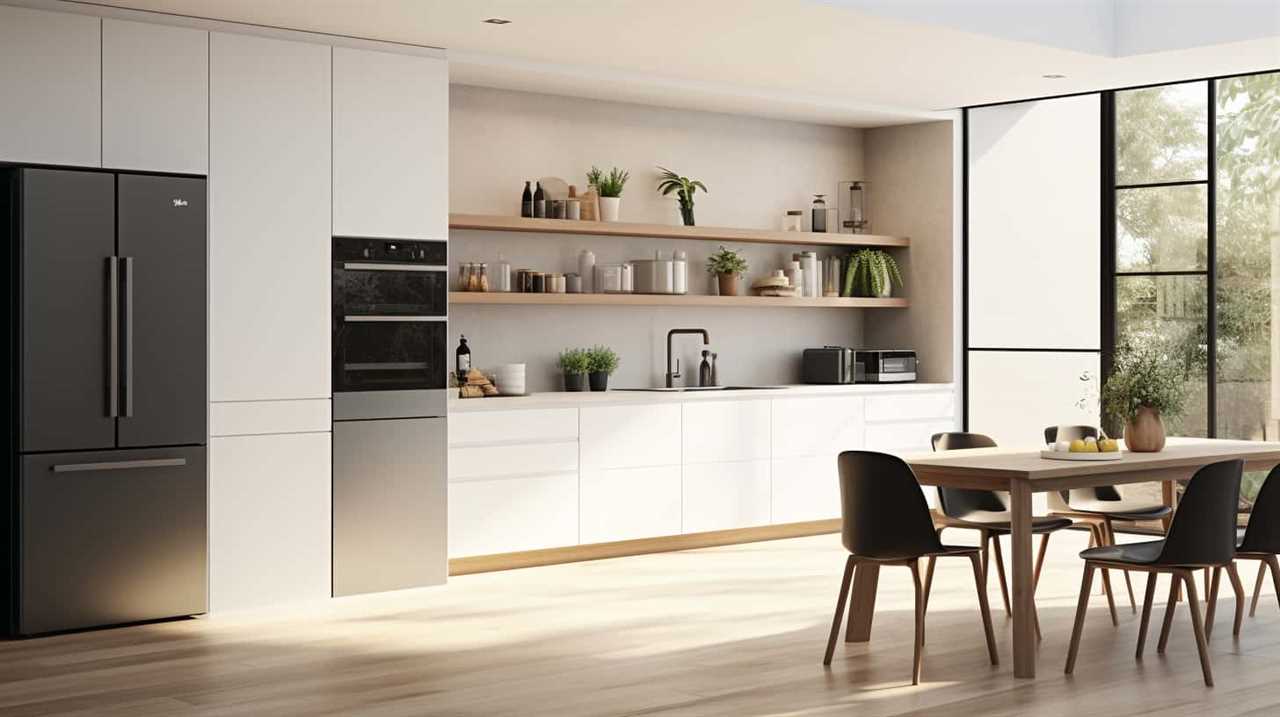
Here are five ways power management software enhances efficiency:
- Idle power reduction: It minimizes power consumption during periods of inactivity, preventing unnecessary energy wastage.
- Scheduling: The software allows for the scheduling of power usage, enabling appliances to remain off during non-essential times.
- Power monitoring: It provides real-time feedback on energy consumption, enabling users to identify power-hungry devices and make informed decisions.
- Power optimization: The software analyzes power usage patterns and adjusts settings to maximize energy efficiency without compromising performance.
- Remote control: It allows users to remotely power off appliances, reducing standby power consumption when not in use.
Understanding the role of power management software in optimizing efficiency sets the stage for exploring the savings potential of unplugging chargers.
The Savings Potential of Unplugging Chargers
A significant potential for savings can be achieved by unplugging chargers. Many people are unaware of the energy consumption of idle devices, such as phone chargers, when left plugged in. While the amount of electricity used by a single charger may seem insignificant, the cumulative impact of millions of chargers worldwide is substantial.
Studies have shown that even when not actively charging a device, chargers continue to draw power, resulting in wasted energy and unnecessary expenses. By simply unplugging chargers when not in use, individuals can make a meaningful contribution to reducing their energy consumption and saving money on their electricity bills.
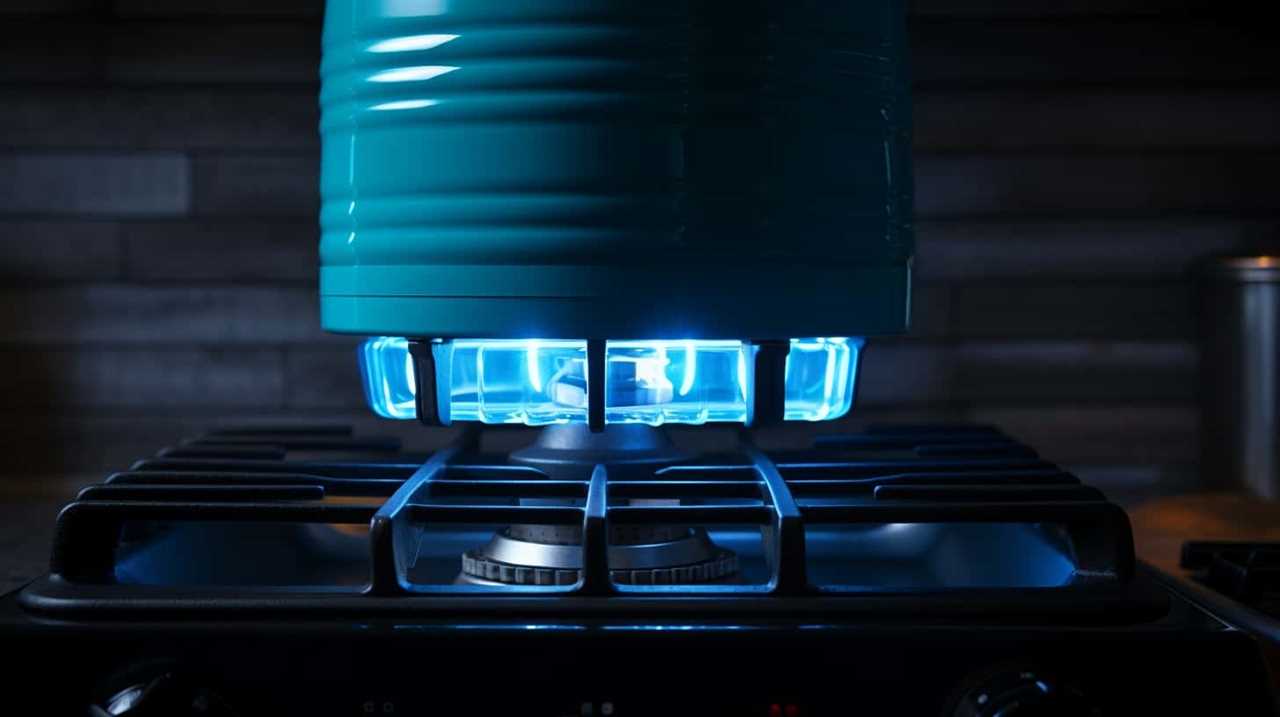
This small action, when multiplied across households and businesses, has the potential to make a significant impact on energy conservation and sustainability.
The Truth About Phantom Load
Phantom load, also known as standby power or vampire power, is a hidden source of electricity consumption that occurs when appliances are switched off but still plugged in. Many people are unaware of this phenomenon and its impact on their energy bills.
Here are some key points to increase phantom load awareness and develop energy-saving habits:
- Invest in advanced power strips that automatically cut off power to appliances in standby mode.
- Unplug devices that are not frequently used, such as chargers, gaming consoles, and audio equipment.
- Use power-saving features on electronics, such as sleep mode or power-off timers.
- Opt for energy-efficient appliances with low standby power consumption.
- Conduct regular energy audits to identify and eliminate phantom loads in your home.
Debunking Common Misconceptions
One misconception that needs to be addressed is the belief that simply switching appliances off at the plug does not save electricity. This is a common misconception about power consumption that needs to be debunked.

While it is true that some appliances consume energy even when they are turned off, known as phantom load, many appliances do not fall into this category. Switching these appliances off at the plug can indeed save electricity.
It is important to identify which appliances have phantom load and unplug them when not in use. By doing so, you can effectively reduce your energy consumption and contribute to saving energy.
It is crucial to debunk energy-saving myths and educate ourselves about common misconceptions to make informed decisions about power consumption.
Tips for Maximizing Energy Savings
To maximize energy savings, it is essential to implement a few key strategies when it comes to managing appliances and minimizing power consumption. Here are five energy-saving habits that can help reduce electricity bills:
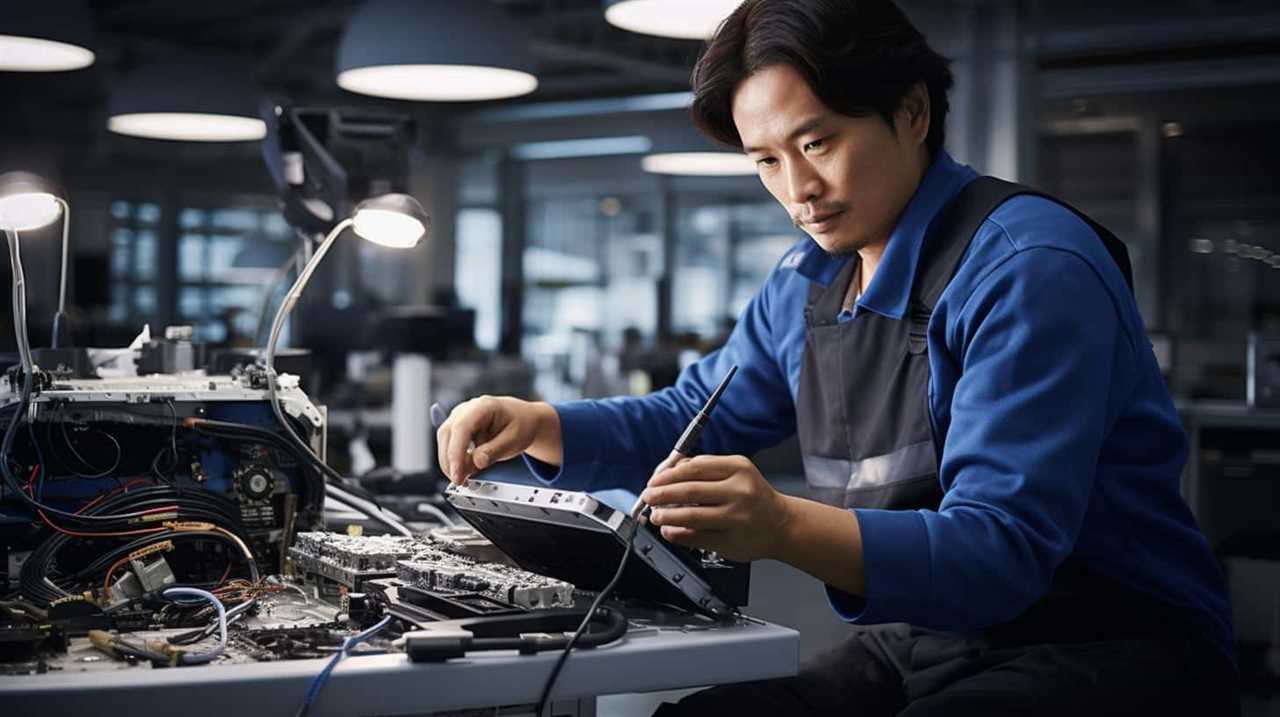
- Unplug appliances when not in use: Many appliances continue to draw power even when turned off. By unplugging them, you can eliminate this ‘phantom’ energy usage.
- Use power strips: Plug multiple appliances into a power strip and switch it off when not in use. This prevents standby power consumption and makes it easier to turn off multiple devices at once.
- Opt for energy-efficient appliances: Look for appliances with the Energy Star label, as they are designed to use less energy without sacrificing performance.
- Adjust thermostat settings: Lowering your thermostat by just a degree or two in colder months can significantly reduce energy consumption. In warmer months, use fans instead of air conditioning whenever possible.
- Utilize natural light: Open curtains and blinds to let in natural light during the day, reducing the need for artificial lighting.
Frequently Asked Questions
Are All Appliances Affected by Standby Power Consumption?
Energy efficient appliances have reduced standby power consumption, but not all appliances are affected. The impact of standby power on electricity bills depends on the specific appliance.
How Much Electricity Can Be Saved by Switching off Appliances at the Plug?
Switching off appliances at the plug can result in significant energy savings, leading to a reduction in electricity bills. Implementing this simple energy-saving tip can have a substantial impact on overall energy consumption.
Is It Necessary to Unplug Chargers When Not in Use?
The environmental impact of leaving chargers plugged in and the convenience vs. energy saving debate of unplugging chargers are important factors to consider. To address the current question, it is necessary to evaluate the potential energy consumption of chargers when not in use.
Can Power Management Software Help Reduce Energy Consumption?
Power management software can be an effective tool for reducing energy consumption. By optimizing power usage and managing energy-intensive processes, it can lead to significant power savings. Additionally, using energy-efficient appliances can further enhance the benefits of power saving tips.

What Are Some Common Misconceptions About Switching off Appliances at the Plug?
Common misconceptions about switching off appliances at the plug include the belief that standby power is negligible and that it doesn’t make a significant difference in energy consumption. However, energy saving tips emphasize the benefits of standby power reduction for overall electricity savings.
Conclusion
In conclusion, switching off appliances at the plug can indeed save electricity.
Understanding standby power consumption, debunking the myth of vampire energy, and evaluating energy-efficient appliances are all crucial factors in maximizing energy savings.
Unplugging chargers and being aware of phantom load also contribute to reducing electricity usage.
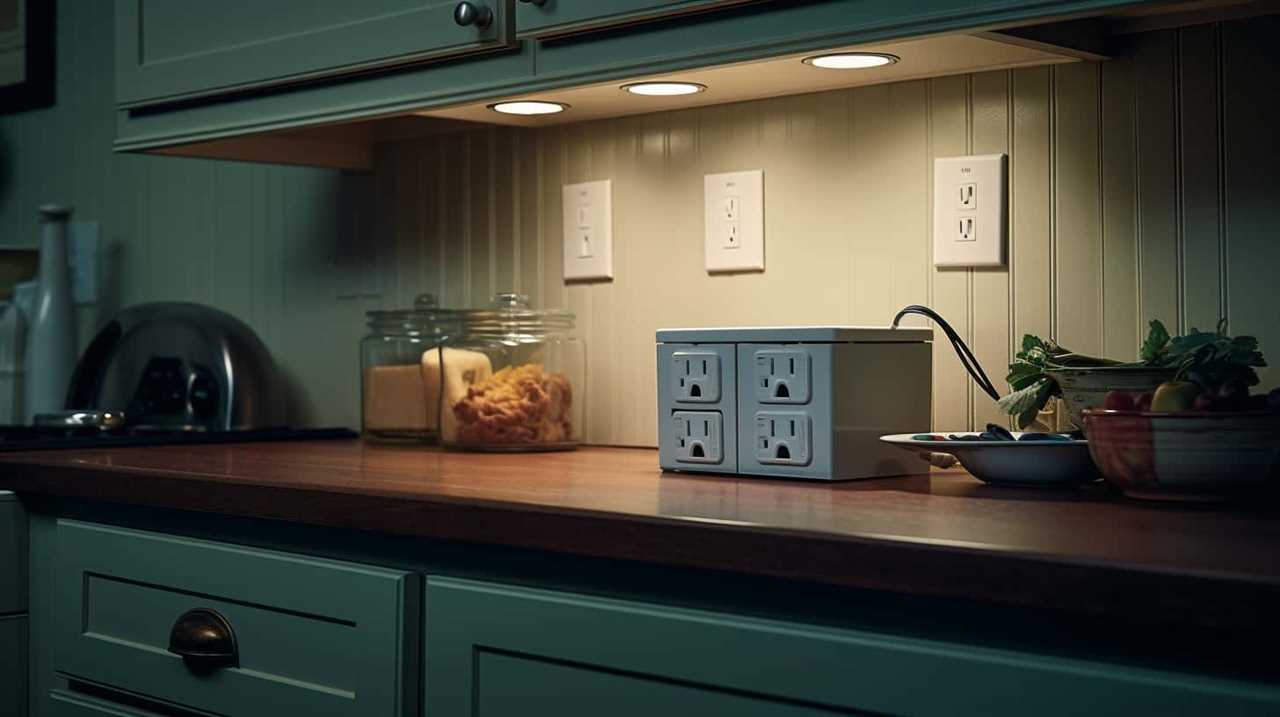
By following these tips and debunking common misconceptions, individuals can make a significant impact on their energy consumption and contribute to a more sustainable future.

